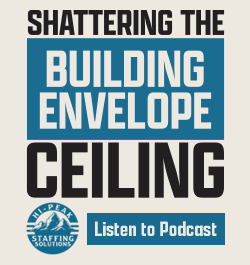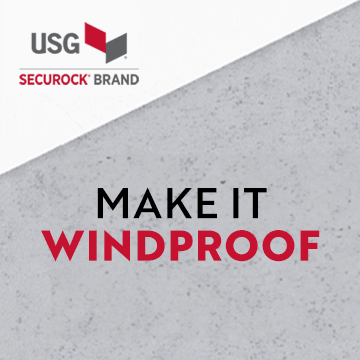I loath I&W
« Back To Roofers TalkIt took my brother-in-law and I 4 hrs. to tear off 6 sq. of black 3-tab shingles on a 4/12 roof on Tuesday. Removed the 4 nails, worked the end of the shingle loose, and slowly pull as the shingle lifts off the 'Goo'. Hands were gooped with the stuff from off the back of the shingles. I put 15# felt over this notorious stuff so the next guy has it easy.
Today, I had a leak around a Power Exhaust. As I'm removing the shingles, I came across the top edge of Grace I&W. I thought "No problem" with the plastic film on this product. I was wrong! Apparently the plastic melted, disintegrated, or something cause the next 2 rows that needed removed were stuck fast. Thank God I only had to remove 4 shingles from this stuff.
Ive' noticed lately a number of new installs with dark grey to black shingles "Deep Down In Florida Where The Sun Shines Damn Near Every Day," I&W applied stright to the deck. My question is how are the shingles stickig to the I&W?? Is it a bleed from the I&W? Shingle strip seal down? B) :) :) B) Deep Down In Florida Where The Sun Shines Damn Near Every Day
I'm fine with it on a walkable slope when it's ran horizontally but if ran vertically, like in the pics above , I put some nails in the top.
Or if it's steep I will nail the tops.
It reacts very differently at different temperatures.
I put some in and along the length of a valley yesterday on a 10/12 slope and then walked up and down it several times. It never moved. Storm Guard, not I/W.
The previous roofers had used a very thin metal to line the valley and it was crinkled up in several spots which led to a nasty leak.
I took the metal out of the valley and discarded it.
I redid a slate roof on a 3/12 pitch porch roof earlier this year. HO insisted with having I&W and didn't put up an argument with this low slope for slate. Well, I had a gutter seam to fix that was 7' above this porch, so I used my Little Giant multi-ladder on the I&W. As I was working on the seam, I felt like I was getting further and further away from the gutter. Looked down at the feet of my ladder, and sure enough, I was on a sloooow slide down the roof.
BTW, I did put on 15# felt over the I&W before installing the 14x22 slate.
Actually I tried I/W ONE time and ONE time ONLY!
I put that crap down on a roof not realizing how sandy it was, proceeded to walk across it pushing off with my foot, slipped and dang near went off the friggin roof.
ONLY roll of it I ever bought and ever will.
Is this sandy crap what you guys have to use on the bottoms and then stand on it to install the shingles?
flatbed, I don't know about I/W because I don't use it but storm guard sticks very well to the felt.I have never had it move any at all.
I don't depend on it to do anything though. Home Owners, especially those who's roofs are currently leaking, like the idea of its intended purpose very much. It is an advantage when selling.
They just want the job done right but they don't know what the heck right is!
So when you say you are going to fix any and all rotten wood, install heavy duty felt underlayment over that, put down this sticky rubberish material called storm guard, new flashing, new shingles, blah blah whatever, that sounds very "right" to them. And IS! ;)
I wanted to use one solid piece for the back pan but I couldn't get the "(*&(#W%&(*#%" I mean, the "nice little flashing pan" to cooperate so I made that small piece at the top, overlapped it, put two nails in the bottom and sealed the heads with clear geocel trypolymer sealant.
This chimney was leaking in FOUR places.
There is an upper part also that I reflashed.
On the lower level you see in the pics above, it was leaking at both the top and bottom corners.
On the upper level they had the flashing letting the water in behind the siding on the right side due to no kickout at the bottom. Also had a leak in one of the little small valleys of the cricket.
What a mess! It's rained cows, hogs and bull frogs a dozen times since I repaired it.
Haven't heard a peep from the Client. :)
But one of his co-workers called saying her low slope sunroom roof was leaking and He said you need to call W I L L I E. :)
It's poured rain a half dozen times since I replaced her low slope sunroom roof and I haven't heard a peep from her either. :)
I never took the siding off.
Someone had already flashed or reflashed this one before me.
Everything came right out without having to remove any siding.
Didn't use step flashing either. I like to use 4 x 4 hemmed wall flashing.
See the little cut in the vinyl at the top corner? There is another one at the bottom corner. I just slid the wall flashing in at the top and down just past the bottom corner.



First line on all my proposals.
"Due to many homes having Ice and Storm shield on their roof decks, and it cannot be removed, nor can the shingles be smoothly removed from it, wood replacement may be required. All such work IS EXTRA and charged at the wood repair rate below. When required, harness anchor points are $200.00 per anchor. This includes OSHA, Safety, and Difficult to access areas."
BTW, Willie, why did ypu reinstall all the siding before running the step flashing and back pan? Just curious. :)
It's my understanding that I&W is supposed to seal the nail when it's driven through. That's my attraction to it, because we don't get many ice dams here.
If you stick it to the decking, the membrane can't move much. Sticking it to a piece of felt, it seems like it would allow some movement, which may loosen it's grip on the nail. I could be wrong.
I know I haven't been burned like cts in a while. Last time was a 130sq hip roof w/ I&W at the eaves. I would made great money if it wasn't for that crap!
Here's an example: Basically the repair spot is double waterproofed. First with the storm guard then with shingles and new flashing.
When I leave a job I am confident that I will not have to return for a warranty issue.

Tom, if i'm not mistaken its main purpose was to be used at the bottoms and edges of roofs in the north where condensation and ice damming is an issue.
Living and working in the extreme south, I do not use it for those purposes at all.
Its secondary purpose is to be used in valleys, around chimneys, skylights, etc.
I do only repair work. No installs.
Mainly I use it as a sales tool.
It takes just a couple minutes to install over a repair area before putting back the "real" water proofing.
Probably because it's water proof, unlike felt that soaks up water. I know people that don't even peel the plastic off anymore. The economic downside of using this stuff is about to come home to roost if I'm not mistaken. :ohmy:
OW- If your not adhering it to the substrate, as it was intended, why use it?
I don't use I/W. I use GAF storm guard.
It's a little different. The topside is non sticky and non sandy.
It's a smooth, thin rubbery type film on top and has very good traction.
I never stick it down to bare wood either. I use #30 felt over any bare wood spots.
It should come off fine later down the road. They will have to take felt and all.
Yeah, it adds hours to the job. Not to mention lots of woodwork. I've had to redeck a couple now. One roof I tore off had two layers of the stuff and it wasn't slowing the leaks any.






















